Winter Lesson Plan

Lesson Plan Mindmap for Winter – Click to Enlarge
CLICK ICONS TO JUMP DIRECTLY TO EACH SUBJECT ON THIS PAGE








WINTER LESSON PLAN
This page is a free-shared lesson plan archive for teaching all educational subjects within the context and theme of “Winter”. It is purposed for use in community education environments, homeschool environments, traditional schooling environments, or as a supplemental and fun addition to any education program. As part of the complete Education for Life Program, this lesson plan is specifically designed to work in conjunction with the other components: Foundations of Teaching, Curriculum, Teaching Strategies, Learning Tools and Toys, Evaluation Model, and The Ultimate Classroom. If you’d like to learn how all these components work together, click here. Click here for the specifics focused on just using the lesson plans:
CLICK HERE FOR A DETAILED TUTORIAL ON HOW TO USE THIS LESSON PLAN
NOTE: The colors are provided as a possible linear progression (red/easiest to violet/most challenging) for people that might prefer a more linear structure. Our core philosophy, however, is that through creativity every color can be made easy or challenging for any learning level.
RELATED PAGES (mouse-over for descriptions and click for complete pages)
EDUCATION OVERVIEW | HOW TO USE THIS COMPONENT | OUR OPEN SOURCE PURPOSE


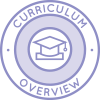
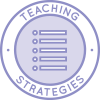
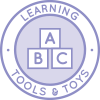
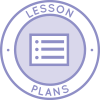

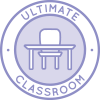


WAYS TO CONTRIBUTE TO EVOLVING THIS EDUCATION PROGRAM WITH US
SUGGESTIONS | CONSULTING | MEMBERSHIP | OTHER OPTIONS
A NOTE ABOUT ALL ONE COMMUNITY LESSON PLANS
The One Community lesson plans are intentionally designed for use in ANY educational environment and with ALL educational, cultural, religious/spiritual, and philosophical approaches to teaching and learning. They are designed without an ideological approach and specifically so they can be adapted to include the views, preferences, methodologies, and/or ideologies preferred by different parents and teachers.
For maximum flexibility and adaptation, they are also designed to be combined to teach multiple subjects at the same time. Doing this increases the creativity, effectiveness, and fun of your learning environment. Once we are on the property and operating our version of the complete school and Education for Life program, we will be adding video examples of how to combine the lessons. In the meantime, visit the Teaching Strategies page for a list of suggestions.
ARTS AND TRADES
CLICK HERE FOR THE COMPLETE SUBJECT OUTLINE FOR ARTS & TRADES
 | TEACHING ARTS AND TRADES WITHIN THE CONTEXT OF WINTER |

| The Arts- Using materials such as cotton, tissues, cloth scraps and others, create a snowperson*.
- Using white materials, such as tissue paper and cotton, and glue, create a winter landscape picture*.
- Observe different shades of white of snow. Then use squares of paper in different shades of white to create a picture of Winter*.
- Think of a song/tune that makes you think of winter. Write your own words to this tune, making a new winter song*.
- Study frost on windows. Learn how to create this effect using art materials, such as stencils, glass paint and mirrors/jars, and create your own ‘frosty window’ inspired piece.
- Study frost on windows. Create your own ‘frosty window’ inspired set of three ornaments*.
- Paint a picture of a winter scene*.
|

| Trades- Learn to take a screenshot on your computer and take one of a winter picture. Use photo editing software and learn to change* the picture’s brightness, contrast etc. Print out the original screenshot and the photo after you have edited it.
- Take some digital photographs of a winter scene that you visit this winter. Use a collage-building software and build a collage* with some of these photos. Add some other digital touches, such as frames or stickers.
- Upcycle some old clothing, sweater and/or scarves, for example, create a winter piece* for yourself or a loved one. This can be a sewn piece, a knit piece or another kind of piece.
- Imagine you are in charge of creating a winter theme for a retail window display. Do some quick research to see how this would look in a few different countries, before drawing* your own window display.
- Imagine you are creating a brochure for a tourism office to attract more tourists to visit a certain place in the world during the winter. Choose one place, and using online sources, create a brochure*.
- Create a multimedia picture* inspired by Winter, using a combination of photography, painting and other techniques.
- Using your trade of choice, create a piece or pieces* inspired by the Winter season (such as natural skincare line, organic knitwear line, architectural piece).
|
| CLICK HERE TO EMAIL US IF YOU HAVE AN IDEA TO ADD TO THIS SECTION |
* Please note that anything with an asterisk is just a suggestion. The diversity of options with asterisks are interchangeable and purposed to stimulate your own ideas. Any one of these suggestions could be replaced with a written paper, any form of art project (drawing, painting, music, paper mache, clay, wood, knitting/embroidery, metals, etc. etc.), an experiment, a presentation, a mindmap, a computer program, a web design project, a piece of poetry or a song, an interpretive dance or play, a group project, or anything else. What we feel is most important is that both the Learner and the Teacher agree on an exercise/activity they both feel would be maximally engaging, fun, and effective. If you come up with an idea we haven’t already thought of, please share it with us.
ENGLISH
CLICK HERE FOR THE COMPLETE SUBJECT OUTLINE FOR ENGLISH
Note: Any language can be substituted for English. The subject is listed here as “English” because that is the primary language of most of the people on the team, and the official language of the country we’re building our initial location in.
 | TEACHING ENGLISH WITHIN THE CONTEXT OF WINTER |

| - Practice reading a few sentences about winter out loud* to a mentor, either from a book about seasons or a book set in winter.
- Photocopy or print out at least one paragraph about the winter season. Then label* all the major parts of speech in each sentence. (subject, object, verb, adjective, adverb, etc.)
- Memorize and recite* a short, winter-inspired poem.
- Choose a piece of classical fiction set in winter, and then write an analysis* of the setting of the piece (place, time, season, customs) and how it set the mood and tone of the piece.
- Choose a news story related to winter (winter sport, natural disaster involving snow, how certain groups of people are coping with the winter weather…). Then search online for how at least five different news sources covered the same event. Compare and contrast this coverage in a short report*.
- Write a short story*, employing archetypes related to winter drawn from various myths and traditions.
- Write a literary work in your genre of choice*, set in the Winter season or about this season.
|
| CLICK HERE TO EMAIL US IF YOU HAVE AN IDEA TO ADD TO THIS SECTION |
* Please note that anything with an asterisk is just a suggestion. The diversity of options with asterisks are interchangeable and purposed to stimulate your own ideas. Any one of these suggestions could be replaced with a written paper, any form of art project (drawing, painting, music, paper mache, clay, wood, knitting/embroidery, metals, etc. etc.), an experiment, a presentation, a mindmap, a computer program, a web design project, a piece of poetry or a song, an interpretive dance or play, a group project, or anything else. What we feel is most important is that both the Learner and the Teacher agree on an exercise/activity they both feel would be maximally engaging, fun, and effective. If you come up with an idea we haven’t already thought of, please share it with us.
HEALTH
CLICK HERE FOR THE COMPLETE SUBJECT OUTLINE FOR HEALTH
 | TEACHING HEALTH WITHIN THE CONTEXT OF WINTER |

| - Using construction paper and other materials, make a picture* of what you should be in the winter to protect yourself from the cold.
- Draw a picture* showing how you like to have fun outside in the Winter. If you do not have a pre-existing activity, choose one that you would like to try.
- List* 5+ examples of how your diet does or could change in the winter and find out how the changes could impact your overall level of nutritional intake.
- List 5+ examples of how your physical activity level does or could change in the winter. List* some examples and write* a description reflecting on how your overall level of physical activity increases or decreases and how you feel.
- What is your favorite winter sport? Research what muscles are used for this sport and how to train these muscles outside of the Winter season. Write a training plan* for yourself.
- Practice being present and mindfulness as a family or group by sitting around holiday lights in silence, feeling one another’s presence and/or walking through a neighborhood together after dark to admire any lights used as decorations. Afterwards, brainstorm a list of words* to describe how you feel.
- Some believe that the Winter season serves as a restart/reboot on the mind-body-spirit. Practice mindfulness by building a snowman outside or sit in front of an open fire outside. Be fully present and in the moment. Afterwards, write a short reflection* on your experience.
- Create a mindfulness program* for you, your family and/or friends this season as an alternative to shopping, presents and consuming too much food and drinks. Invite them to participate in this program during the winter holiday, and at the end of it, reflect as a group on how this winter holiday was different from last year’s.
|
| CLICK HERE TO EMAIL US IF YOU HAVE AN IDEA TO ADD TO THIS SECTION |
* Please note that anything with an asterisk is just a suggestion. The diversity of options with asterisks are interchangeable and purposed to stimulate your own ideas. Any one of these suggestions could be replaced with a written paper, any form of art project (drawing, painting, music, paper mache, clay, wood, knitting/embroidery, metals, etc. etc.), an experiment, a presentation, a mindmap, a computer program, a web design project, a piece of poetry or a song, an interpretive dance or play, a group project, or anything else. What we feel is most important is that both the Learner and the Teacher agree on an exercise/activity they both feel would be maximally engaging, fun, and effective. If you come up with an idea we haven’t already thought of, please share it with us.
MATH
CLICK HERE FOR THE COMPLETE SUBJECT OUTLINE FOR MATH
 | TEACHING MATH WITHIN THE CONTEXT OF WINTER |
 | - Using basic geometric shapes, create some pictures* of items you associate with winter (such as a snowman). Count the number of each type of shape in each picture.
- Choose two animals you associate with winter and create a chart* comparing their height, weight and other measurements.
- Using the weather for the past week of winter, create a bar chart* showing the number days with snow, rain, sunshine, etc.
- Using the data for the highest and lowest temperatures for each day in the past two weeks of winter, create a graph* with x,y coordinates to show the data collected. Then create a bar chart* with the same time and compare how the graph and the chart look.
- Using volume formulas, figure out and record* the area and volume of 50 winter-themed or related objects.
- Explore the probability distribution of temperature and precipitation this winter in your area and a very different area of your choice. Write a synopsis* of your findings.
- Read a scientific paper related to winter and write a review article* exploring the statistics and mathematics involved in this paper. (for example, grey heron survival rates in winter).
|
| CLICK HERE TO EMAIL US IF YOU HAVE AN IDEA TO ADD TO THIS SECTION |
* Please note that anything with an asterisk is just a suggestion. The diversity of options with asterisks are interchangeable and purposed to stimulate your own ideas. Any one of these suggestions could be replaced with a written paper, any form of art project (drawing, painting, music, paper mache, clay, wood, knitting/embroidery, metals, etc. etc.), an experiment, a presentation, a mindmap, a computer program, a web design project, a piece of poetry or a song, an interpretive dance or play, a group project, or anything else. What we feel is most important is that both the Learner and the Teacher agree on an exercise/activity they both feel would be maximally engaging, fun, and effective. If you come up with an idea we haven’t already thought of, please share it with us.
SCIENCE
CLICK HERE FOR THE COMPLETE SUBJECT OUTLINE FOR SCIENCE
 | TEACHING SCIENCE WITHIN THE CONTEXT OF WINTER |

| Life Sciences- Print out a picture of an animal or insect that hibernates during the winter, and create a collage of words* that describe the animal and its winter hibernation.
- Print out a picture of an animal or insect that hibernates during the winter, and write one or two sentences* describing the animal and its winter hibernation.
- In a short report*, explain how an animal of your choice keeps warm in the winter.
- Explain plant dormancy in terms of metabolism, cell division and other factors. Write a short report*.
- Choose an animal or plant associated with winter, and explain natural selection using some of its unique adaptations to cold weather etc. in a report*.
- Create a videotaped presentation* describing homeostasis, how the human body maintains its core body temperature, and what happens in winter conditions of extreme cold.
- Choose a group of marine animals adapted to the cold winter weather and prepare a lesson plan for primary students* about this group of marine animals, their different adaptations, how they work, and how some species are genetically closer to some than others.
|

| Physical Sciences- What are the states of matter? What are these for water, and which of these do you associate most with winter? Learn about this and create a picture* of your findings.
- Take two dishes of water outside on a winter day (or into as cold a place as you have access to as possible), and add some salt into one of them. If the temperature can get to freezing, note your observations and find an explanation for them. Study what salt does to water regarding states of matter. Write a 1 page paper* of the process and the findings of your experiment.
- Explain why some people say you should wear black in the winter, rather than white. Place a piece of black cloth and a piece of white cloth outside on a cold, sunny day or in an environment to simulate that, and return after a while to feel whether or not there is a difference, or learn about it if you can’t try it. Make a poster* that shows your results.
- Write a 2 to 5 page paper* about thermal insulation? What are some examples of good thermal insulators used in winter clothing? Look for jackets and other items in your home or online to see what they use for thermal insulation.
- Do you find that everything seems quieter outside after it snows, with snow covering the ground? Explain why in a short essay*.
- Write a short* snowball-making manual, explain the formation of a snowball, ideal conditions and non-ideal conditions, using physics to explain these.
- Lead a workshop* explaining the physics skating, skiing, sledding and/or some other winter sports to athletes in that field.
- Explore the physics of how to make driving safer in the winter (e.g. snow tires) and how vehicles such as large trucks and airplanes pose additional challenges. Create a recommendation paper* for manufacturers with your findings on how they could improve even more.
|

| Earth Sciences- Draw or color in a diagram* showing how the Earth’s relationship with the Sun causes winter.
- Find photos of snow falling, snow and snow fog on the Internet and make a collage* of them.
- Study a map with a mentor and choose three town or cities at very different latitudes and research and record* their usual winter temperatures and weather.
- Draw a diagram* showing how the surface of bodies of water freeze.
- Create an illustration* with an explanation describing how snow is formed, starting with the rising of a mass of air.
- Write a report* explaining what snow fog is, in terms of ice crystals and cold temperatures. Find some examples of places that experience snow fog and pictures of a snow fog.
- Write a 2 to 5 page paper* explaining why winter is cold in terms of convection, including additional information you find relevant and interesting.
- Write a short report* explaining how humidity and wind affect how cold one feels, given the same temperature. Give examples of some different places.
- Create a poster* and written accompanying material explaining how glaciers move in terms of regulation, and use your choice of real-life glaciers as illustrations.
- Write and post a blog or online article* about the formation of snow caps on mountains on earth, comparing and contrasting these to those on Venus.
- Make a documentary* exploring glaciology, including avalanches, ice sheets, permafrost.
|
| CLICK HERE TO EMAIL US IF YOU HAVE AN IDEA TO ADD TO THIS SECTION |
* Please note that anything with an asterisk is just a suggestion. The diversity of options with asterisks are interchangeable and purposed to stimulate your own ideas. Any one of these suggestions could be replaced with a written paper, any form of art project (drawing, painting, music, paper mache, clay, wood, knitting/embroidery, metals, etc. etc.), an experiment, a presentation, a mindmap, a computer program, a web design project, a piece of poetry or a song, an interpretive dance or play, a group project, or anything else. What we feel is most important is that both the Learner and the Teacher agree on an exercise/activity they both feel would be maximally engaging, fun, and effective. If you come up with an idea we haven’t already thought of, please share it with us.
SOCIAL SCIENCES
CLICK HERE FOR THE COMPLETE SUBJECT OUTLINE FOR SOCIAL SCIENCES
 | TEACHING SOCIAL SCIENCES WITHIN THE CONTEXT OF WINTER |

| - Draw a picture* of your home in winter and include words that describe how your family lives during this season.
- Create a list* of holidays that are celebrated during the winter.
- Make a map* of your country or a country near you that shows transportation routes that are are different during winter than other seasons.
- Looking at the geographic overview of Earth, create a slideshow* that shows the different locations during winter.
- Find at least five books about historical events that occurred in winter. Write a 10+ page report* comparing the events and write a large section about the relevance or non-relevance of winter being the season the events occurred.
- Choose a topic from the indigo level of the social science molecule and write a thesis* relating that topic to winter.
- Lead a symposium* on the effects the winter season has on industry. Videotape* and free share this on the internet.
|

| Foreign Languages
(Each of the following is to be completed in the foreign language(s) being studied)- Learn at least 5 words for different winter related concepts.
- Find a paragraph about winter and copy it out. Then underline the winter-related concepts and familiarize yourself with them.
- Read a short story about winter or set in winter.
- Read a short story about winter and write a short summary of the story.
- Compose a new story about winter or set in winter, using other works as guides.
- Explore a piece of classical fiction that were originally written in your foreign language.
- Write a report* comparing and contrasting at least two pieces of classical fiction that were originally written in your foreign language.
|
| - Learn words for different concepts related to winter.
- Read & write with words for winter related concepts.
- Explore winter in fiction.
- Explore & create different types of literature in relation to winter.
- Compose a new piece of literature about winter.
- Explore the complete history of and writings about winter.
- Write a dissertation-level paper on winter.
|
| CLICK HERE TO EMAIL US IF YOU HAVE AN IDEA TO ADD TO THIS SECTION |
* Please note that anything with an asterisk is just a suggestion. The diversity of options with asterisks are interchangeable and purposed to stimulate your own ideas. Any one of these suggestions could be replaced with a written paper, any form of art project (drawing, painting, music, paper mache, clay, wood, knitting/embroidery, metals, etc. etc.), an experiment, a presentation, a mindmap, a computer program, a web design project, a piece of poetry or a song, an interpretive dance or play, a group project, or anything else. What we feel is most important is that both the Learner and the Teacher agree on an exercise/activity they both feel would be maximally engaging, fun, and effective. If you come up with an idea we haven’t already thought of, please share it with us.
TECHNOLOGY AND INNOVATION
CLICK HERE FOR THE COMPLETE SUBJECT OUTLINE FOR TECHNOLOGY AND INNOVATION
 | TEACHING TECHNOLOGY & INNOVATION WITHIN THE CONTEXT OF WINTER |

| Technology- Ask to use an adult’s smartphone and download a thermometer app. Try it outside in the winter weather – does it work?
- Ask to use an adult’s ipad and download Hopscotch (http://www.gethopscotch.com/). Learn to program a snowflake graphic by following one of their tutorials.
- Learn to type and/or practice typing. Copy out a paragraph about winter with your typing skills.
- Take some pictures of what winter looks like in your part of the world and any place you may be visiting this season. Create a basic website to display these pictures and share the link with friends and family.
- In many parts of the world, snow and ice can affect road conditions. Research how cities and towns deal with snow and ice (for example, how they clear snow before morning rush hour). Write a short report*.
- In many parts of the world, it gets so cold that water freezes and disrupts water management systems. Write a report* about the measures that are put in place to protect and prevent parts of systems, such as pipes, from freezing.
- Write a report* about the viability of using solar panels in areas of the world in which temperatures reach below zero. Include any measures to prevent freezing.
|

| Innovation- Go outside on a winter day, with proper clothing on, and close your eyes. How does winter feel, smell, sound and/or taste to you? Note down what you notice.
- Up until the winter solstice, the days get darker. What are some strategies you or others use to cheer yourselves up during this time?
- Create a mind map* noting what identity, values, and belief constructs related to winter that you hold.
- Go online and learn about how to best make handouts, powerpoint presentations etc. for oral presentations. Choose one of these presentation aids and create one* with content and graphics related to winter or a winter-related theme, using fonts and colors you find suitable.
- Winter is when many people set new goals (re: new year). Write a short piece* about goal setting and NLP.
- Some people get what is known as the “winter blues”. Write a short piece or handout* about how NLP can be used to handle the “winter blues”.
- Compare and contrast what at least two different thinkers or schools of thought say about goal setting (re: new year resolutions) and self-motivation. Write a short piece*.
- Compare and contrast what at least two different thinkers or schools of thought in psychology say about the “winter blues”. Write a short piece*.
- Write an essay* related to new year resolutions and goal setting in either an educational, business or world-change setting.
|
| CLICK HERE TO EMAIL US IF YOU HAVE AN IDEA TO ADD TO THIS SECTION |
*Please note that anything with an asterisk is just a suggestion. The diversity of options with asterisks are interchangeable and purposed to stimulate your own ideas. Any one of these suggestions could be replaced with a written paper, any form of art project (drawing, painting, music, paper mache, clay, wood, knitting/embroidery, metals, etc. etc.), an experiment, a presentation, a mindmap, a computer program, a web design project, a piece of poetry or a song, an interpretive dance or play, a group project, or anything else. What we feel is most important is that both the Learner and the Teacher agree on an exercise/activity they both feel would be maximally engaging, fun, and effective. If you come up with an idea we haven’t already thought of, please share it with us.
VALUES
CLICK HERE FOR THE COMPLETE SUBJECT OUTLINE FOR VALUES
 | TEACHING VALUES WITHIN THE CONTEXT OF WINTER |

| - Think of three people and one thing you appreciated about each person this year. Make them each a card* that communicates what you appreciated about them this year and give it to each of them during the winter season.
- Think about someone in your community/town/neighborhood that may be feeling cold or is in need of compassion this holiday season, and gift* them something (handmade, upcycled) to help them stay warm.
- Reflect on all the things you appreciated about and learned from your experiences this year. Create a collage* expressing these ideas as a New Year’s gift to yourself.
- Reflect on all the things you appreciated about your family, friends or another group. Create a collage or collages* representing all the things you appreciated as a New Year’s gift(s) to other.
- Think about someone in your community/town/neighborhood that may be feeling cold, hungry and/or lonely during the holiday season. With permission from parents/guardians, invite them* to a restaurant or some other place for a warm meal.
- Go volunteer at a community soup kitchen and/or food bank over the winter holidays and write a reflective piece* about your experience.
- For some people, winter can be a cold and/or lonely time of year. Design and initiate a project* to bring joy into the lives of those in need this winter.
|
| CLICK HERE TO EMAIL US IF YOU HAVE AN IDEA TO ADD TO THIS SECTION |
* Please note that anything with an asterisk is just a suggestion. The diversity of options with asterisks are interchangeable and purposed to stimulate your own ideas. Any one of these suggestions could be replaced with a written paper, any form of art project (drawing, painting, music, paper mache, clay, wood, knitting/embroidery, metals, etc. etc.), an experiment, a presentation, a mindmap, a computer program, a web design project, a piece of poetry or a song, an interpretive dance or play, a group project, or anything else. What we feel is most important is that both the Learner and the Teacher agree on an exercise/activity they both feel would be maximally engaging, fun, and effective. If you come up with an idea we haven’t already thought of, please share it with us.
OTHER RESOURCES
We're building a resource section. Click here if you have a suggestion or resource for this page.
OPEN SOURCE SUBJECT RESOURCES (click icons for complete pages)



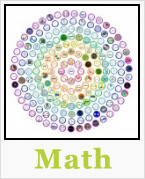



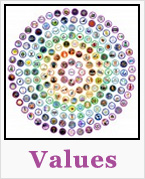
OPEN SOURCE CURRICULUM OUTLINES (click image for summaries and links to complete pages)
CARE
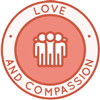



SHARE
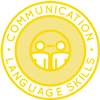
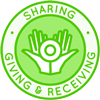

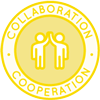
PLAY
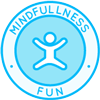
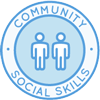
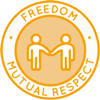

OPEN SOURCE TEACHING METHODOLOGY SUMMARIES
Montessori | Waldorf | Orff | Reggio | Multi-Intelligence | Bloom's Taxonomy | Study Tech | I-WE
INDEX OF ALL THE ONE COMMUNITY OPEN SOURCE LESSON PLANS

Click this image for the Lesson Plans for Life page with links to the rest of the lesson plans
THE WORLD'S LARGEST ONLINE FREE EDUCATION RESOURCE ARCHIVE
RELATED CONTENT AND OTHER RELATED RESOURCES
We're building this resource section. Click here if you have a suggestion or resource for this page.
























 One Community
One Community



